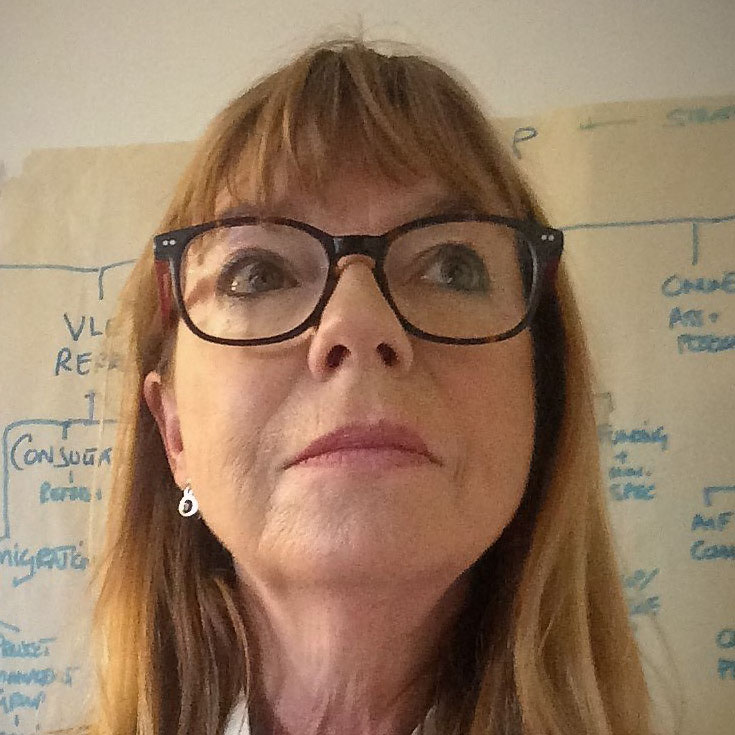10 February 2021
Blog one: Resilient Academic Leadership Insight

Authors
Dr Alison Nimmo
Head of Academic Development, Glasgow Caledonian University
Dr Fiona Smart
Head of Learning and Teaching, Edinburgh Napier University
In this blog, Dr Alison Nimmo and Dr Fiona Smart introduce and explore the construct of ‘resilience’ as an intangible asset and summarise the first online gathering of the Principal Fellows Network Scotland, hosted as part of the new Resilient Academic Leadership Collaborative Cluster.
If someone asked you to explain how you or your university was showing resilience in the face of COVID-19 would you be able to provide a quick response? A response that revealed what resilience is and therefore how others might acquire it for themselves?
The Principal Fellows (PF) Network Scotland is attempting to do just this. Representing a variety of disciplines across most higher education institutions in Scotland, we are running a Collaborative Cluster as part of the QAA Enhancement Theme on Resilient Learning Communities. We are using the Evidencing Value Framework (EVF) - developed as part of the previous Enhancement Theme - to explore the construct of ‘resilience’ as an intangible asset, which we suggest has potential value to the Scottish sector particularly as we rise to the challenge of COVID-19.
In responding to the current pandemic, we are provocatively aiming to raise eyebrows by suggesting that ‘resilience’ may be a more appropriate and timely focus for maintaining and enhancing a quality student learning experience, and indeed staff working experience, than one based on ideas of metrics of excellence. We recognise that this might be contentious, daring even. The world of HE is so full of reference to excellence - is it ok to challenge it? We think so and so we dared.
Consequently, we are daring to see if we can surface understanding of how ‘resilience’ might be within or enabled by particular groups, such as the Scottish PF Network. So, what have we been up to so far?
During January 10 very intrepid PFs from the Network came together in an online gathering. Here we began our adventure into finding out what resilient academic leadership practices are, for us as individuals, and how our disciplines and universities might be construed as exhibiting, or simply supporting, resilience in our systems, processes and practices.
At the outset we took an egocentric view adopting the lens of the UKPSF Descriptor 4 to claim that we had been judged to be folks who indeed have a record of, and have been recognised for, our successful academic leadership practices. In other words, we made the assumption that we could recognise academic leadership through taking an integrated approach (4iv) to how we address challenges and projects by pulling on our teaching, research, practice, administrative, management, and/or mentoring experiences to lead strategic initiatives with successful impact on learning and teaching practice (4ii), policy, and people development (4iii).
We hold values that guide what academic leadership practice looks like i.e. practice that reflects respect for staff and students (V1), for equality and diversity and inclusiveness in HE (V2), is grounded on research and evidence that underpins effective pedagogical and learning and teaching developments (V3). As Principal Fellows we also have an appreciation of how the micro and meso are influenced by developments in the macro, and indeed exo, environments and how we need to anticipate and respond to these in taking action in our own practice, our disciplines, our institutions, our sector (V4).
So working from this premise and the basic assumption about academic leadership we used an online collaborative sticky note Jamboard tool to throw into the ring of the Evidencing Value Framework some initial thoughts on the intangible concept of resilience; what is resilience and where can we see it influencing at the micro, meso, macro and exo levels, our practice and those of our disciplines. We also looked for examples of resilience at these levels in the practices of our departments, schools, faculties or universities. So, what did we find on our first foray?
Well, we quickly debunked the common metaphor, useful though metaphors are in conveying an intangible concept, of resilience as elastic which can be severely stretched but which bounces back to its original shape. For, as we mused, sometimes elastic bursts, snaps and indeed is stretched beyond its original shape or size - most commonly recognised as the burst knickers elastic type having been washed too hot.
With psychologists and health care academics amongst us we considered whether some of our ideas, our sticky notes on the Jamboard, could be conceptualised through the nature/nurture dichotomy - are we born resilient or can the skills of resilience be developed? If we look to the literature, we find that there are many resilient skills typologies - having a sense of purpose, self-awareness, mindfulness, self-care and positive relationships. Does this resonate in the world of HE?
In our online gathering dialogue and Teams chat comments there was a felt notion of ‘nature’ in that we seemed to agree that all individuals had the potential for resilience, but that this was instantiated by the notion of nurture as mirrored in our sticky notes pinpointing the need for self-care, sleep, diet, exercise. A potent contribution suggested that resilience was, as an intangible, ‘resource hungry’ and from this emerged concepts of resilience symbolised as a limited resource that could be depleted over time, or might need recharged, and of resilience as an ‘energy bank’.
A separate notion of bounce back brought the biologists and sociologists in our midst to challenge the eco system as a metaphor for resilience from the perspectives of different disciplines. With much collective eco system wisdom shared in the Teams chat, it was put forward that eco systems are complex and whilst some parts may survive, others may return in an altered state whilst other parts may never return at all. This could be a challenging metaphor when aligned to resilient learning communities that might contain people, like universities.
As the sticky notes continued to be posted a new theme emerged relating to how organisational narrative or discourse could position resilience as positive investment in energies and resources. For example, the discourse in our L&T strategies of the power of learning technologies in helping us to survive the digital pivot and flourish through opening up new market opportunities (yes uniquely, many of us share the same mindset in peering over the top of that stiff upper lip for that elusive COVID-19 silver lining). But equally, our sticky notes revealed that the institutional discourse could position resilience as a negative, withdrawing energies, for example, the discourse around mental health of staff and students, and as a required response to poor working or perhaps learning conditions.
A number of proxies for resilience emerged from our Jamboard to make visible where we considered resilience could be seen lurking in, or indeed striding through our universities during this particular COVID-19 period - student engagement in online learning, staff engagement in offering CPD opportunities and resources. The investment in staff and students’ development was very visible to most of us in supporting the idea of resilience being able to bounce back, and to promote acceptance that we and institutions cannot always control the uncontrollable in a pandemic. There seems to be a strong theme of the intangible essence of resilience being interpreted and shared as time and energy to invest in and build up a resilience energy bank.
In dialogue we made reference to the effectiveness of new forms of online team meetings, and cross institutional Cobra meetings during the initial rapid response to home working and online teaching. From a sociologist perspective, it was raised that the intangible concept of resilience is relational, rather than absolute, arising just out of not individuals’ resilience skills per se but out of the social environment, the work context in which the individuals are immersed and nurtured. This hinted of a further metaphor for reliance as interconnectedness seen in proxies such as relationships, networks, connections and communities which speaks to some of the literature around organisational resilience. Might we find resilience as an intangible asset where we find in our practices - individual and collective - relational points of inter-connectedness and inter-dependency?
We found much to explore in this metaphor of resilience being bouncing back but also bouncing forward; the idea that coming back from some form of misadventure, or catastrophe, or pandemic might see resilience in the ability of individuals and organisation to yes, survive, but also and more positively to flourish and prosper. Some current literature on organisation resilience is leading in this direction and we may well follow. It feels more hopeful.
This blog summarises the dialogue and ponderings in our first online gathering of the Principal Fellow Network Scotland in our attempt to reveal the intangible nature of resilience.
The second online gathering of the Principal Fellows Network will ask what does or can resilience look like when it is underpinning a positive ethos and institutional culture in a COVID-19 context. And importantly how can we use this understanding to position resilience albeit intangible, as an asset in the development of academic leadership practices of HE at this time? We look forward to sharing our discussion and findings with you very soon.
In the meantime, a final musing in the pursuit for a more suitable metaphor for resilience than elastic. I wonder if ‘Weebles wobble but they don’t fall down’ could catch on as a new metaphor for resilience (apologies to those of the less mature age – Google will assist you, never fear).

